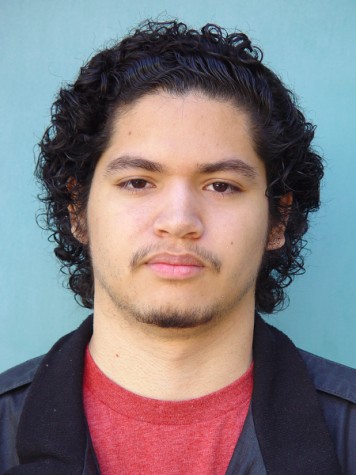William Shakespeare’s “Macbeth” is being revamped into a 1940s film noir play in Glendale Community College’s main stage theater.
The play is directed by Jeanette Farr, who chose to transform one of Shakespeare’s most well-known plays into a film noir, a style which incorporates the black and white film style of the 1940s.
At the beginning of the play, a projection is played onto a large screen showing famous past noir films, one of which was “Sunset Boulevard.” Then the screen and curtain rise as the audience is treated to an opening scene of choreographed characters on stage.
As the play begins, the three witches (Amanda Laskin, Renie Rivas, Jemima Santiago) confront Macbeth (Frank Pozos) and Banquo (Shermie Aguilar) to tell the two of their future. According to the witches, Macbeth’s future reveals that he will one day become the next King of Scotland, but he struggles to decide on whether or not he should pursue the throne.
Unfortunately for Macbeth, the current King of Scotland, King Duncan (Ryan Robbins), has already announced that his eldest son Malcolm (Alex Abraham) will be the heir to his throne. Soon after, Macbeth’s wife, Lady Macbeth (Libby Letlow), encounters the three witches and learns of her husband’s future as well.
To fulfill the witches’ prediction, Lady Macbeth tells her husband Macbeth to murder King Duncan as he plans to stay for the night. At first Macbeth doesn’t want to, but he is soon convinced and he grabs the dagger, planning on framing the king’s own guards with the murder.
This is only the beginning and there are many more complexities that unravel along the way.
The acting itself is believable and entertaining. It is appealing to see how all the actors entered the stage throughout the play. Some crawl in from under a ledge and others sneak in through the shadows.
The King Duncan murder scene is interestingly handled. There is a screen on the stage with a light shining on it. Macbeth stands behind it and all that can be seen is the silhouette of Macbeth as he stabs away with his dagger.
Most of the characters’ changes in the play are well-motivated. Macbeth’s hunger for power ultimately leads him to his doom, and Lady Macbeth’s dignified appearance slowly falls apart as she descends into madness.
The dialogue in this play was written in the early 1600s, so expect to hear Elizabethan English throughout. The average viewer may not comprehend what is being said and may become lost along the way. But having dialogue in its original form gives the play a truly authentic feel.
The movement on the stage is plentiful. There are sword-fighting action scenes, ghosts and spirits that haunt the stage and even a song performed by the three witches. All in all, the acting is excellent and it shows how talented the GCC theater arts department really is.
The costume design was done by Royce Herron, who has all the performers dressed up in appropriate attire that relates back to the 1940s fashion. From buckles and hats to suspenders and slacks, the clothing choice correlates to the era. Generally, all the costumes are suitable, especially the Zoot suits.
The music that emits from the auditorium speakers is also exceptional. The transition music between scenes captured the feel of a noir film with its jazzy bass and keyboard, yet it also encompasses the dark and moody aspect of the play with the sad and gloomy single horn.
The sound effects, which include many different sounds from a constant knock on the door to eerie voices, are loud and clear. They don’t feel overpowered or under-toned; instead they integrate nicely with the play’s atmosphere.
The lighting is superb as well. A spotlight appears when soliloquies were spoken and darkness takes hold of the stage as the witches act out their mischievousness. Also, a few special effects involving fog are used to add to the creepy ambiance of the play.
There are some aspects of the play that transcend beyond the stage. Several times, the actors perform within the aisles of the auditorium, making it feel as if one was involved with the characters in the play.
Presenting the play as a noir style film was a bold undertaking that could have ended in disaster, but that is not the case with this production. The feel of the 1940s intertwines fluidly with the themes presented in “Macbeth.”
Overall, the play accomplishes everything it sets out to do. The actors, the acting, the costumes, the light and sound are all outstanding and they make “Macbeth” a worthy recommendation to anyone who’s interested in seeing what the theater arts department has to offer.
Final performances are Thursday, Friday and Saturday at 8 p.m. and Sunday at 2 p.m.
Tickets are $10 for the general audience, $6 for students and seniors and $4 for groups of 10 or more. They may be purchased at the door or reserved in advance. For more information or reservations, call (818) 240-1000, ext. 5612.
My rating: four out of five stars.


